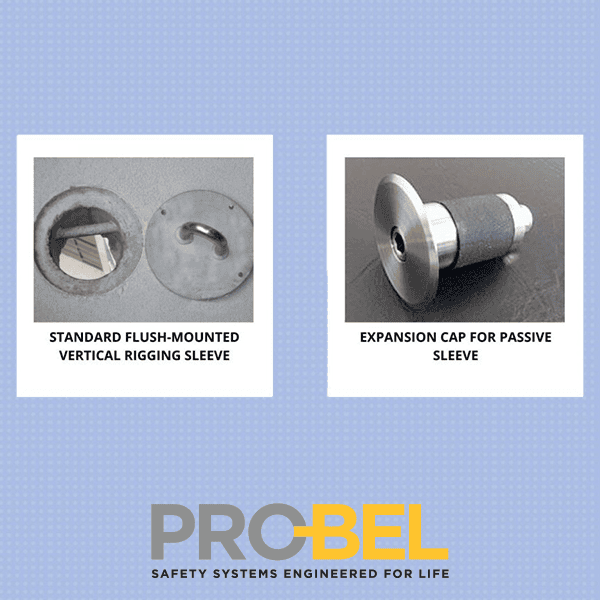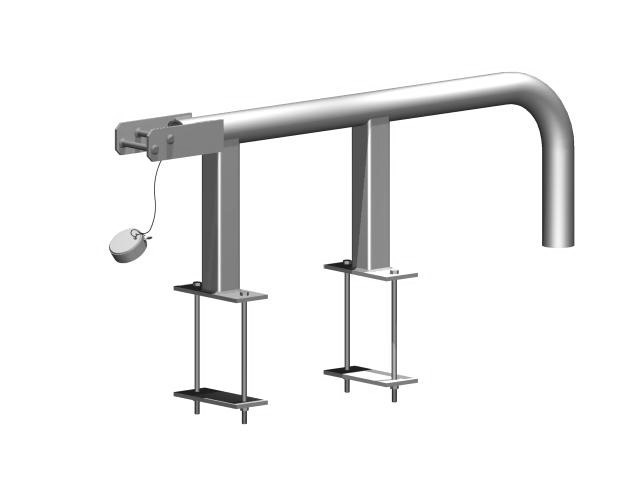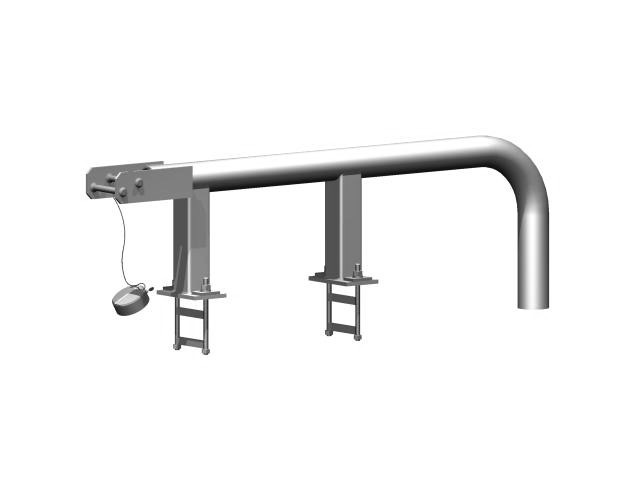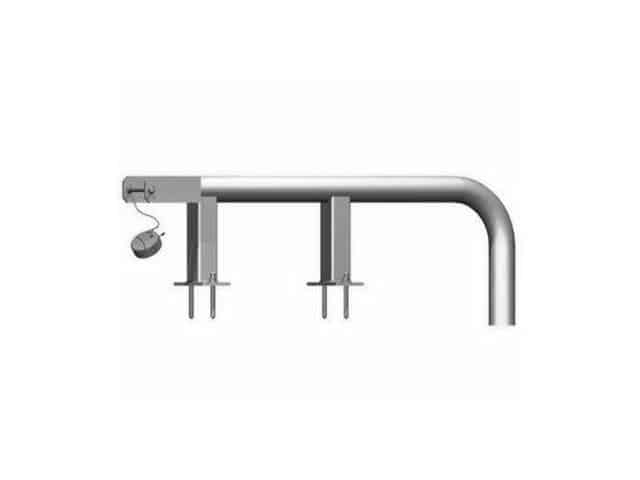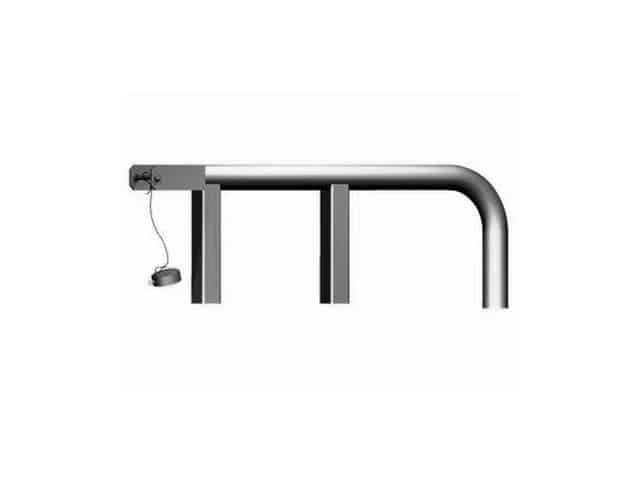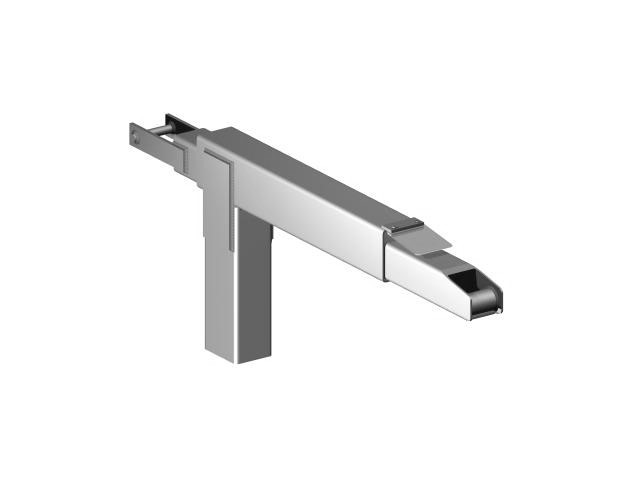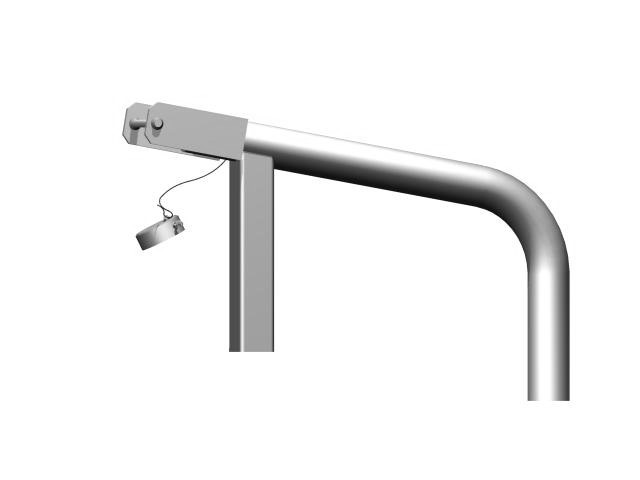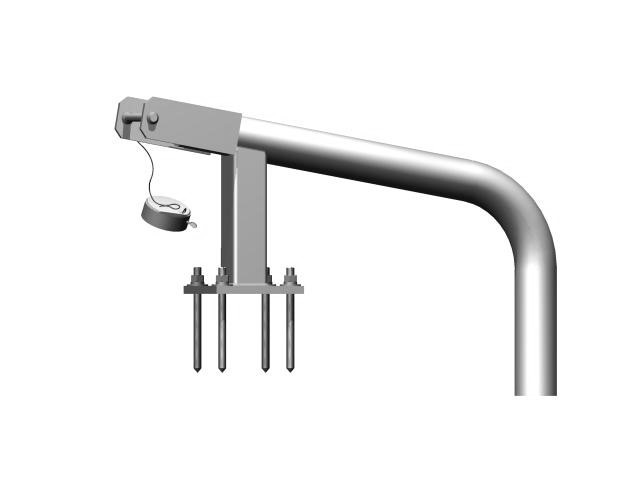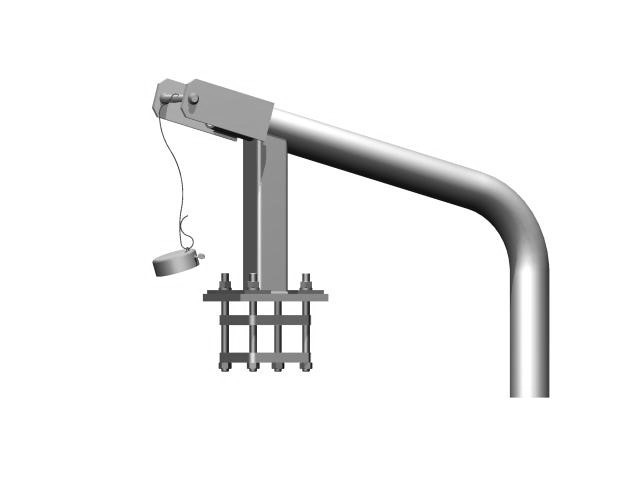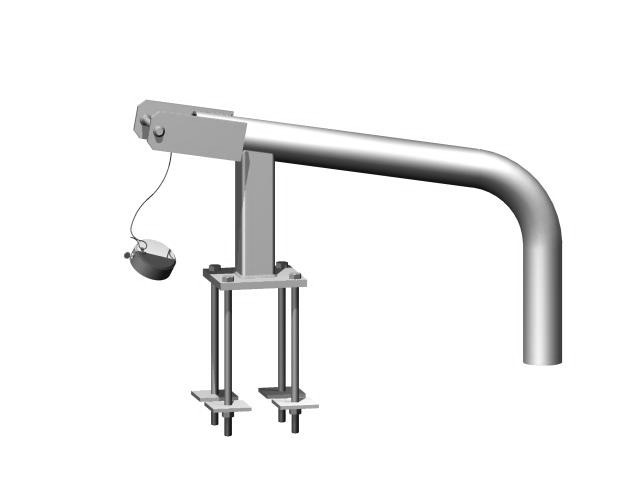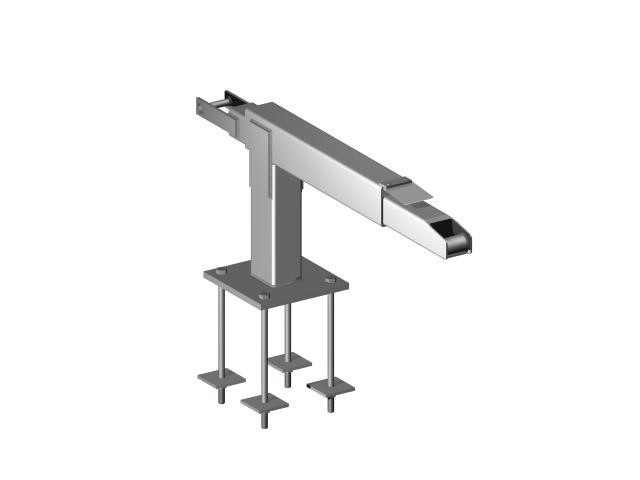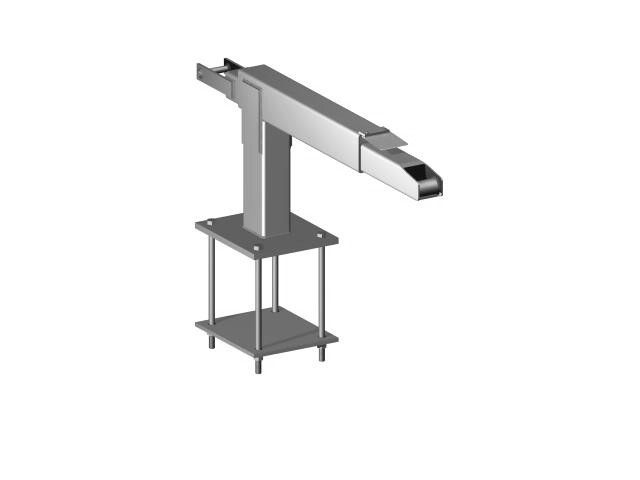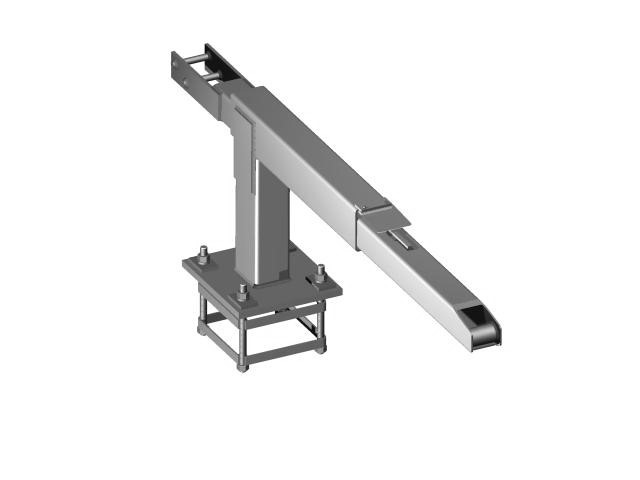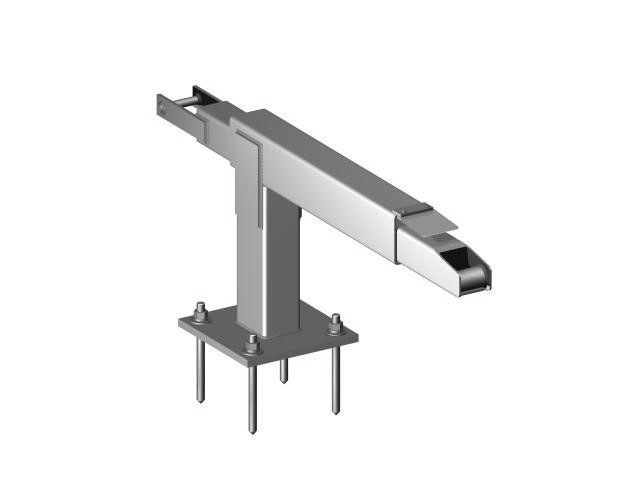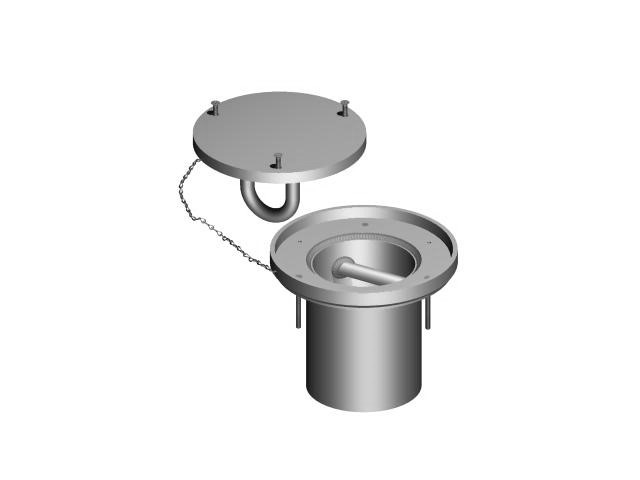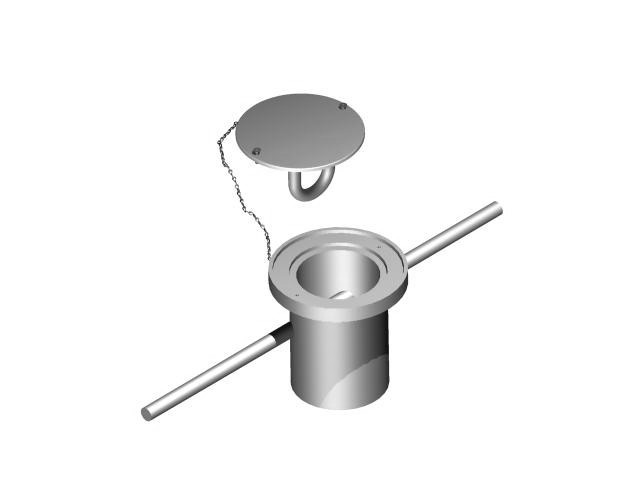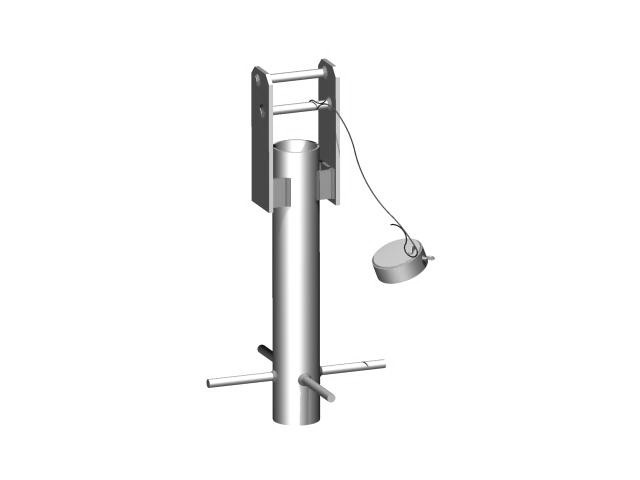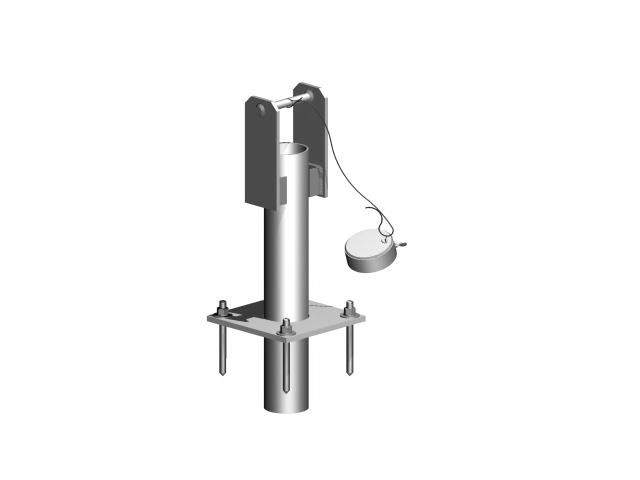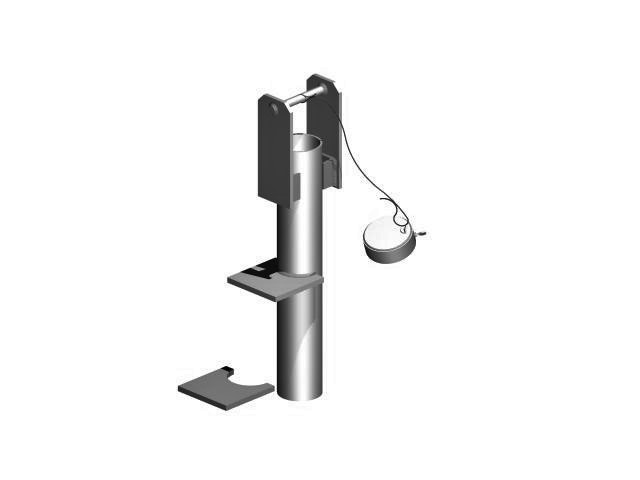In our business of providing safe suspended access and fall protection, our systems are designed to go over, under, or through the building structure. Rigging sleeves allow suspension lines to pass through obstructions. When going over or under isn’t an option, rigging sleeves are our choice of equipment to fulfill the suspended access scope. In fact, they are fast becoming a popular choice for clients as well because of the simplicity of site load testing in comparison to soffit anchors or monorail.
There are primarily three categories of rigging sleeves:
- Vertical,
- Horizontal and,
- Curved.
Although in this article we are focusing on vertical rigging sleeves, many of the same principles apply to all 3 sleeve types.
PRIMARY USE OF VERTICAL RIGGING SLEEVES
Vertical rigging sleeves are designed to allow suspension lines to pass through architectural obstructions such as overhangs, large soffits, and protruding balconies.
For example, the vertical rigging sleeve in the image below is installed on a roof overhang to allow suspended access underneath the overhang.
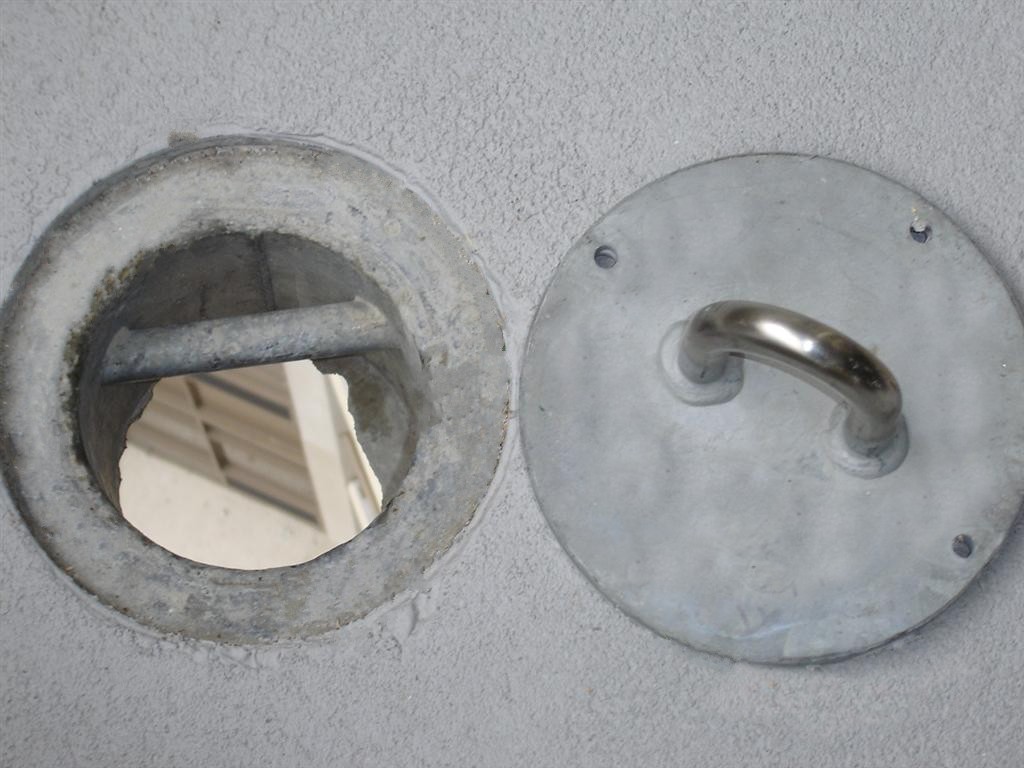
Design Considerations – Architects vs Window Washers
When it comes to rigging sleeves, we often face a design tug-of-war between the architects, building owners, and users (i.e. window washers).
Architects tend to prefer a passive sleeve (often referred to as a pigeonhole) because these are smaller and less obtrusive.
Meanwhile, users prefer a standard rigging sleeve, which is larger. The larger size allows the rigging hook at the end of the cable to pass through the sleeve, giving users the option of raising and lowering cables through the sleeve from a lower level or ground. In order to pull the cable up through, the sleeve must have a minimum interior diameter of 4 inches.
These are the two opposing ideas. Architects and owners want the sleeves to be as small as possible for aesthetic purposes, yet the window washer wants a large enough sleeve to pull up their lines rather than lower them through a small sleeve. Both equipment types provide the same suspended access solution. When choosing between the two, one should take the suspension height into consideration.
Suspension Height: Passive vs Standard Rigging Sleeve
Passive Sleeves
Generally, passive sleeves, which are smaller in diameter, are acceptable for drop heights of 130 feet (or less). Once drop heights exceed 130ft, standard sleeves become the better option because of the ability to raise the lines, which makes management of the tail end of the cable easier. larger diameter and built-in anchor.
Pro-Bel has developed 1 inch and 2 inch passive rigging sleeve holes with a sleek cap that covers the hole and expands to form a watertight seal. The purpose of raising the lines

Portable tripod anchors are required to support suspension lines when rigging with passive sleeves because there is no built in anchor. However, these are the better choice aesthetically and in retrofit situations as well. In retrofit installation, it is more manageable to core a 1-inch hole vs a larger 4-inch hole. See a drawing of the passive sleeve + tripod below.
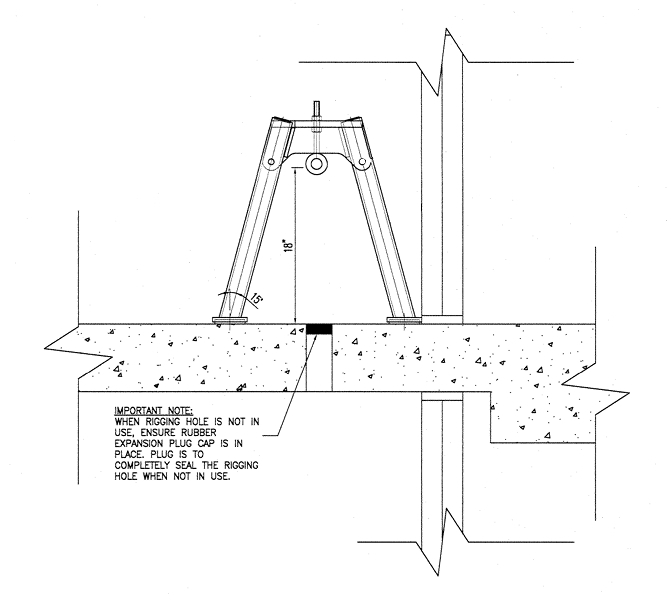
Standard Vertical Rigging Sleeve
Standard sleeves are generally the better option overall. As mentioned above, they have anchors built in, so do not require a portable tripod. They also allow for the usage of mechanical means for pulling up the cable through the sleeve, which is essential for taller drops. This is because as the height of the drop gets taller, raising the cable hand over hand is quite heavy and awkward.
Most codes and standards require the rigger to use mechanical means when raising and lowering suspension lines when the drop exceeds 300 feet. Therefore, buildings over 300 feet should be designed with the standard larger diameter rigging sleeves of 4 inches or more.
Protecting the Façade
Regardless of which sleeve is utilized, taking steps to protect the façade is important. Often, the user cannot see the tail end of the suspension cable, which can spin around and hit the glass/façade below.
In cases where suspension cables are lowered to the ground through the rigging sleeve, it’s imperative to attach a rope tag line to the primary suspension cable. In this scenario, one person is on the roof lowering the cable, and another person is on the ground or lower roof level using the tag line to pull the cable out and away from the façade. This prevents the tail end of the cable from damaging the building façade. It's good practice to utilize a tag line when raising suspension lines as well.
Contact Us For A Quote
Pro-Bel Rigging Sleeves
Share this Post



